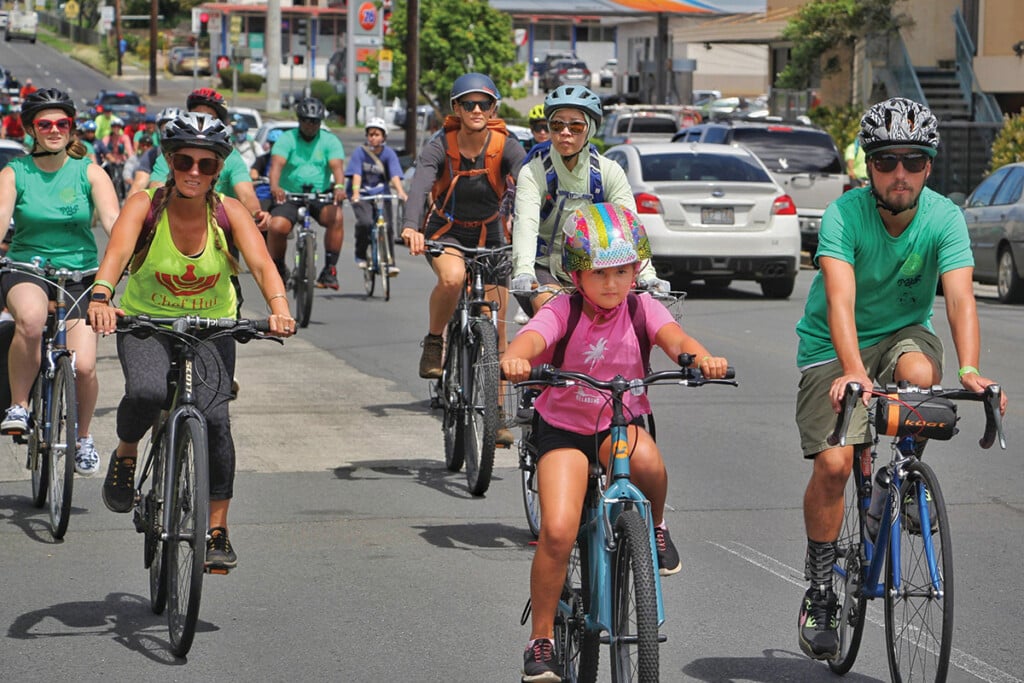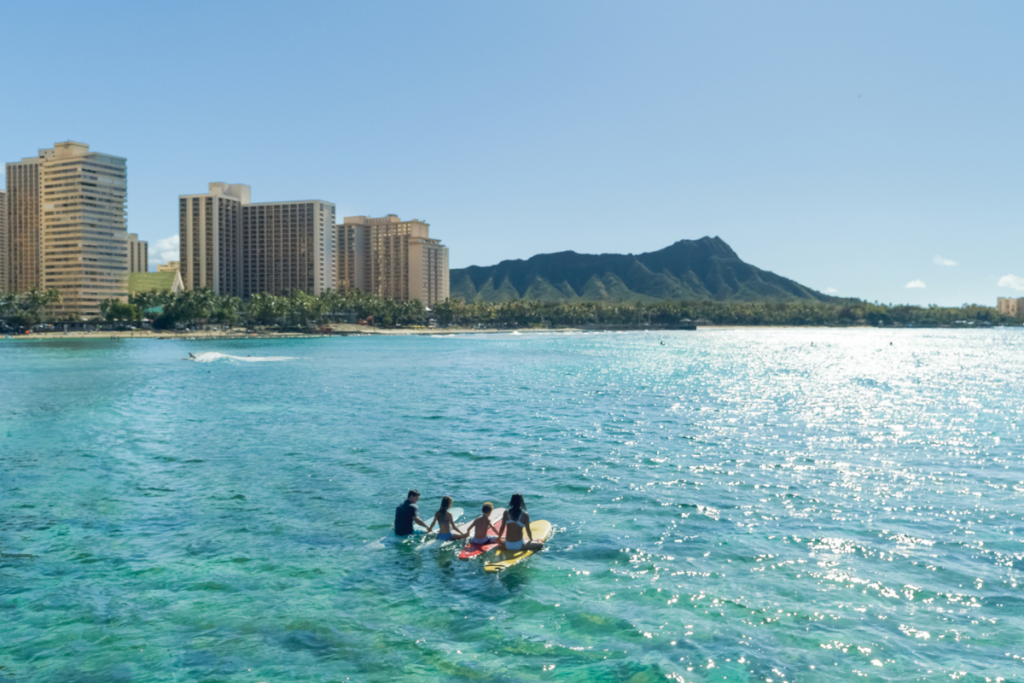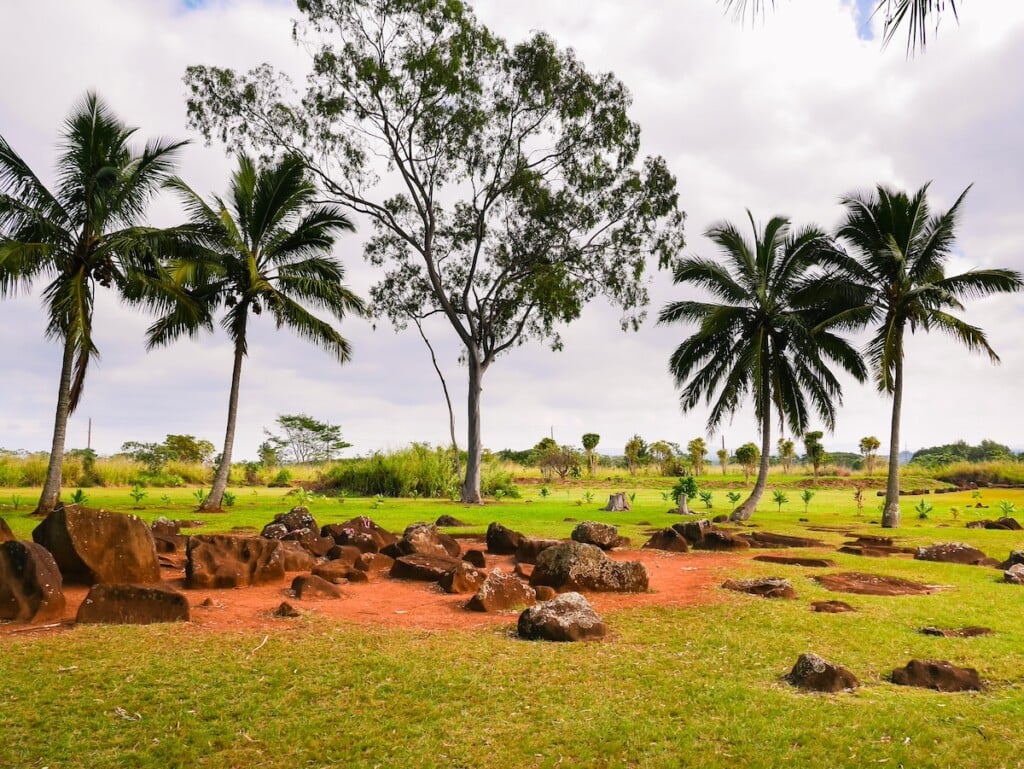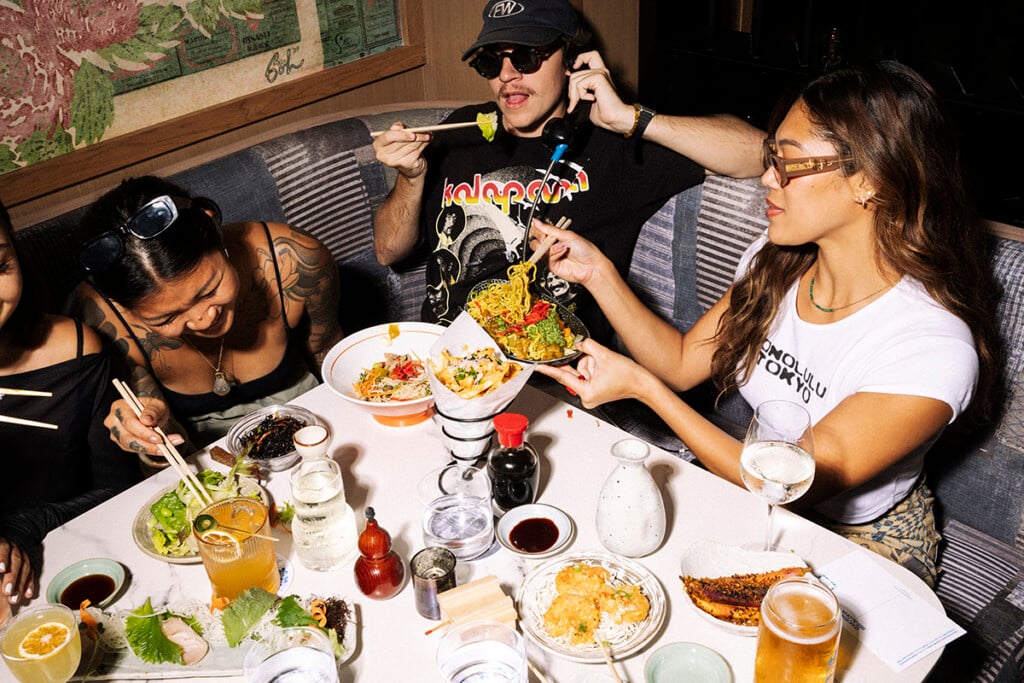Exploring Kalihi Valley on Oʻahu on Two Wheels
The Kalihi Valley Instructional Bike Exchange, KVIBE, looks to change the way people think about one of Honolulu’s most diverse neighborhoods.

Bayner Afituk taught himself to ride a bicycle.
“I just picked up the bike and started riding,” he says. “And I was like, oh, I’m going to try ride down the hill. Then I fell.”
But Afituk was undeterred. Last April, he was one of about 30 middle and high school boys leading the Kalihi Ahupua‘a Ride, an annual bicycle tour through Kalihi, a richly diverse Honolulu neighborhood with a blighted reputation.
The Kalihi Valley Instructional Bike Exchange organizes the tour. The organization, KVIBE for short, teaches neighborhood kids bicycle mechanics and advocates for bike-safe roads. At each of the tour’s five stops, Afituk and his peers share the stories of their island home.
“If you are a youth from Kalihi, there is always that negative narrative,” says Rona Mangayayam, youth services program coordinator for Kōkua Kalihi Valley, KVIBE’s parent organization. “They are changing the narrative and speaking the truth of who they are.”

The gathering of bikers for the annual ride through Kalihi Valley.
Photo: Courtesy of KVIBE
For most of the roughly 80 cyclists on this year’s tour, the action begins just after sunrise at Honolulu Harbor. Even in the early morning, the port buzzes with activity. The hum of airplanes overhead, coming and going from the nearby airport, is matched only by the rumbling of semitrucks loaded with freight containers. Kalihi is the beating heart of Hawai‘i industry, a transit point for goods and people. But even at the port, Hawaiian culture perseveres. Nearby, paddlers launch outrigger canoes onto the turquoise ocean.
Around 8 a.m., buses take cyclists and their bikes 6 miles into the mountains to a 100-acre nature preserve deep in Kalihi Valley. There, chirping birds and crickets replace the cacophony of the city.
Kalihi, in Hawaiian, means “the edge”. The area’s original name, Kalihilihi-o-Laumiha, can be defined as the eyelashes of the Hawaiian goddess Laumiha, as well as “profound silence” or “the edge of silence,” according to Joey Miller, the nature preserve’s resident caretaker and reforestation specialist.
Tour participants join hands as Miller leads them in an oli, or Hawaiian chant. Then, cyclists young and old lift their kickstands and begin the descent from the forested valley to the ocean. Kalihi Valley’s homes and churches are quiet on this Saturday morning. A man stands on his balcony with a baby in his arms, waving at the procession.

About 80 cyclists gather at the start of the ride.
Photo: Courtesy of KVIBE
Before long, the cyclists pull up to the first stop: a small warehouse and parking lot at the valley’s base that used to be a chicken farm. A mural depicting a chicken commemorates the space’s past, but the bike gears painted on the wall offer hints of its present use. This is the KVIBE bike shop, where youth refurbish donated bikes at a rate of about 400 per year.
“To most of us, this is our home. This is where we struggle, find peace,” KVIBE participant Benoit Setik says to the crowd of cyclists forming a half-circle at the bike shop’s entrance. “This is where we tell our stories.”
Harvey Lukas offers the crowd his poetry: “We all grew up around this place full of poverty,” he says. “We do it for the culture, use our bikes as canoes to get from place to place in today’s society.”
At Sanford B. Dole Middle School, across the street from the KVIBE bike shop, 93% of students qualified for free or reduced lunch last year, according to data from the Hawai‘i Department of Education. Thirty-eight percent of students were still learning English.
The median household income of $54,524 for Kalihi-Pālama, the area that makes up lower Kalihi, is the lowest among all O‘ahu neighborhoods, according to data from the City and County of Honolulu. The state House district that covers Kalihi-Pālama has more public housing complexes than any other in Hawai‘i. It is also home to the state’s largest jail, the O‘ahu Community Correctional Center.
The bike tour is one of the few places disparate groups mingle: a Honolulu city councilman is on today’s ride, as are a number of well-to-do O‘ahu cyclists, and of course the KVIBE boys leading the tour, many of whom live in the area’s public housing complexes.

The annual bike ride brings a diverse group of people together to explore this very culturally rice town.
Photo: Courtesy of KVIBE
Avid cyclist Roy Gandy woke up at 4 a.m. and drove from his home in Wai‘anae, on O‘ahu’s west coast, to join the KVIBE ride. Gandy grew up in Kalihi in the 1960s, and biking through his old neighborhood now, he says, “touches a sensitive spot.”
“I biked as a kid all over the valley,” he says.
The tour takes a serious turn as cyclists pull up to Pu‘e‘a Cemetery, where Joseph Kahahawai is buried. Kahahawai was one of five local men accused of sexually assaulting a white woman in the infamous and racially charged Massie Trial of the 1930s. The case ended in a mistrial, with the jury unable to reach a verdict. Afterward, the accuser’s husband and others kidnapped and shot Kahahawai. Those found responsible for Kahahawai’s killing were convicted and sentenced to 10 years in prison, but those sentences were quickly commuted to one hour.
Cyclists stand and sit in overgrown grass among the neglected tombstones, forming a half-circle with the KVIBE boys in the middle. The tour guides take turns addressing the crowd through a megaphone, using a tree stump as their podium.
“Joseph was a brown boy like me, a young man,” Bruce Konman tells the cyclists. “He deserved justice. This happened years ago, and it’s still happening today.”
By midday, the white terns, or manu-o-Kū, have returned from their morning fishing trips. Now, with the sun at its zenith, the birds swoop around the kukui nut trees that line the perimeter of Lo‘i Kalo Mini-Park, the third stop on the tour. Under these trees, the cyclists find respite from the heat.
“Every time I come here, it’s like I’m back at home,” KVIBE senior intern Navaron Selifis says. “I feel at ease.” Selifis recalls his time in Chuuk, where, without the distractions of Netflix and TikTok, he would spend his days fishing and climbing coconut trees. He’s one of many KVIBE participants who’ve emigrated from the islands of the Federated States of Micronesia.
Whereas most public parks host soccer and Little League games, Lo‘i Kalo Mini-Park—lo‘i kalo means taro patch in Hawaiian—is dotted with taro patches and other medicinal and edible plants.
The bounty feeds volunteers who tend to the plants on monthly community workdays. Tucked down an alleyway, Lo‘i Kalo Mini-Park is all that remains of what was once a vast network of spring-fed taro patches in the area, known then Niuhelewai.
“This place is kind of like this oasis in this concrete jungle,” Robert Silva, who stewards the park, tells the cyclists. Silva sports a green bike helmet with a sticker that reads “Kalo Kruzer.” For added sun protection, he attaches woven coconut fronds to his helmet, creating a wide-brimmed hat.
“This place is the hale [house] of Haumea,” the goddess of fertility, Silva explains. The park was a place of healing, where Hawaiian chiefesses gave birth, he says, and the springs around the park flow into the large pond, then out to Kapālama Canal. During the rainy season, the springs pump so much water that Silva says he can fill a 5-gallon bucket in about five seconds.

KVIBE coordinator Savelio “Nuki” Makasini.
Photo: Aaron K. Yoshino
After a quick stop at Kalākaua District Park, with snacks provided by the City and County of Honolulu, bikers wind their way through the lower Kalihi neighborhood. Papaya and moringa trees grow in front of large multifamily homes and a few vintage cars sit rusting in driveways.
Homes give way to factories and warehouses as cyclists make their way closer to the harbor. “This entire area was one big reef system,” says Kehaulani Kupihea, who greets cyclists near the end of the tour. Prior to the 20th century, fishponds stretched across Ke‘ehi and the area that is now Honolulu Harbor. The ponds produced hundreds of thousands of fish every year, along with edible limu, or seaweed.
Kupihea has an encyclopedic knowledge of the area’s history. The head of educational nonprofit Mauliola Ke‘ehi, she has dedicated her life to teaching others about Ke‘ehi, home to O‘ahu’s last fishing village. “We’re trying to bring back the mana [power] to our sacred places,”she says.
In the tour’s final stretch, cyclists ascend the bridge to Sand Island. The slow incline is a challenge.
A boy of 7, one of the smallest KVIBE members, stops under the heat of the sun to walk his bike. An older boy pulls up next to him. “Push,” the older boy says. At that, the younger one swings his leg back over his bike and begins pedaling furiously.
Afituk wants people to change the way they think about the neighborhood, especially those who rarely venture here. “See the struggle, not the trouble,” he says.
Find out more about KVIBE and how you can get involved at kkv.net.
This story was originally published in the Fall 2023 issue of HAWAIʻI Magazine. Get a copy here.


